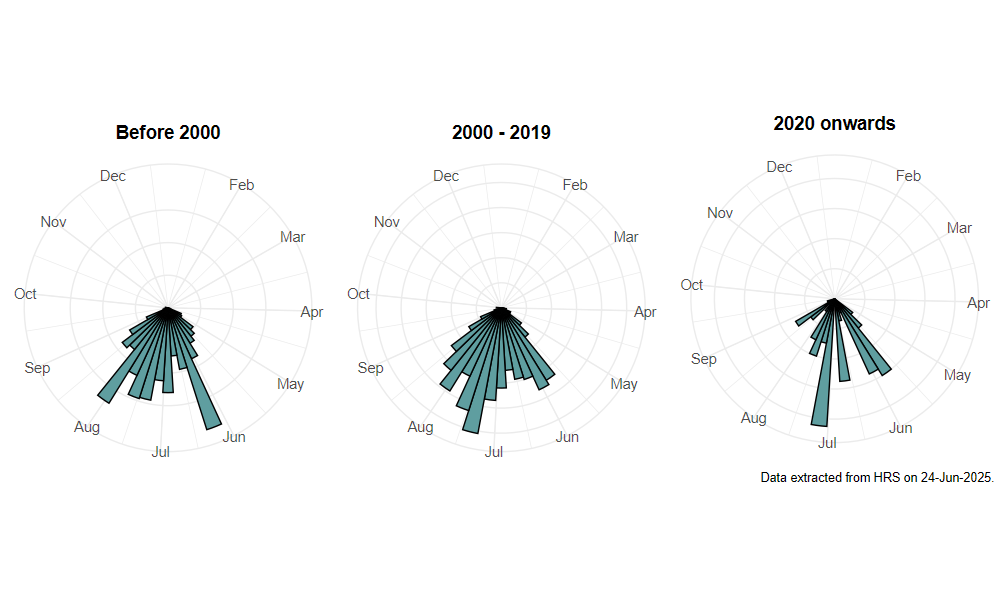Sphaerophoria philanthus (Meigen, 1822)
Identification
Identification difficulty = 3. ![]()
![]() according to Ball & Morris, 20241
according to Ball & Morris, 20241
Biology
Although the larva has not been found in Europe, a species with the same name is well known in N. America where it is an aphid predator in crops such as Brassica. However, the habits and biology described in American literature do not fit at all well with what is known of this species in Europe, so it is probable that they are not the same species (Speight, 2017)2. In Britain it is found in dry heath and moorland situations and also in heathy rides in conifer plantations. Adults fly low amongst the vegetation where they may visit flowers such as Tormentil Potentilla erecta.
Flight period
The following plots show the number of unique records per week excluding those reported to be of immature stages.

Distribution
Widespread and frequent in suitable localities in the north and west of Britain. Scarce in southern England and East Anglia where it is confined to the major heathlands.

Trends
The following plots show the Frescalo TFactor vs year and a map of the rescaled frequency (all records) for the species.
-
Ball, S., & Morris, R. (2024). Hoverflies of Britain and Ireland. WILDGuides (3rd ed.). Oxford: Princeton University Press. ↩
-
Speight, M. (2017). Species accounts of European Syrphidae ( No. 97). yrph the Net, the database of European Syrphidae (Diptera) (p. 294). Dublin: Syrph the Net publications. Retrieved from https://pollinators.ie/wordpress/wp-content/uploads/2018/05/StN-2017-Species-Accounts.pdf ↩